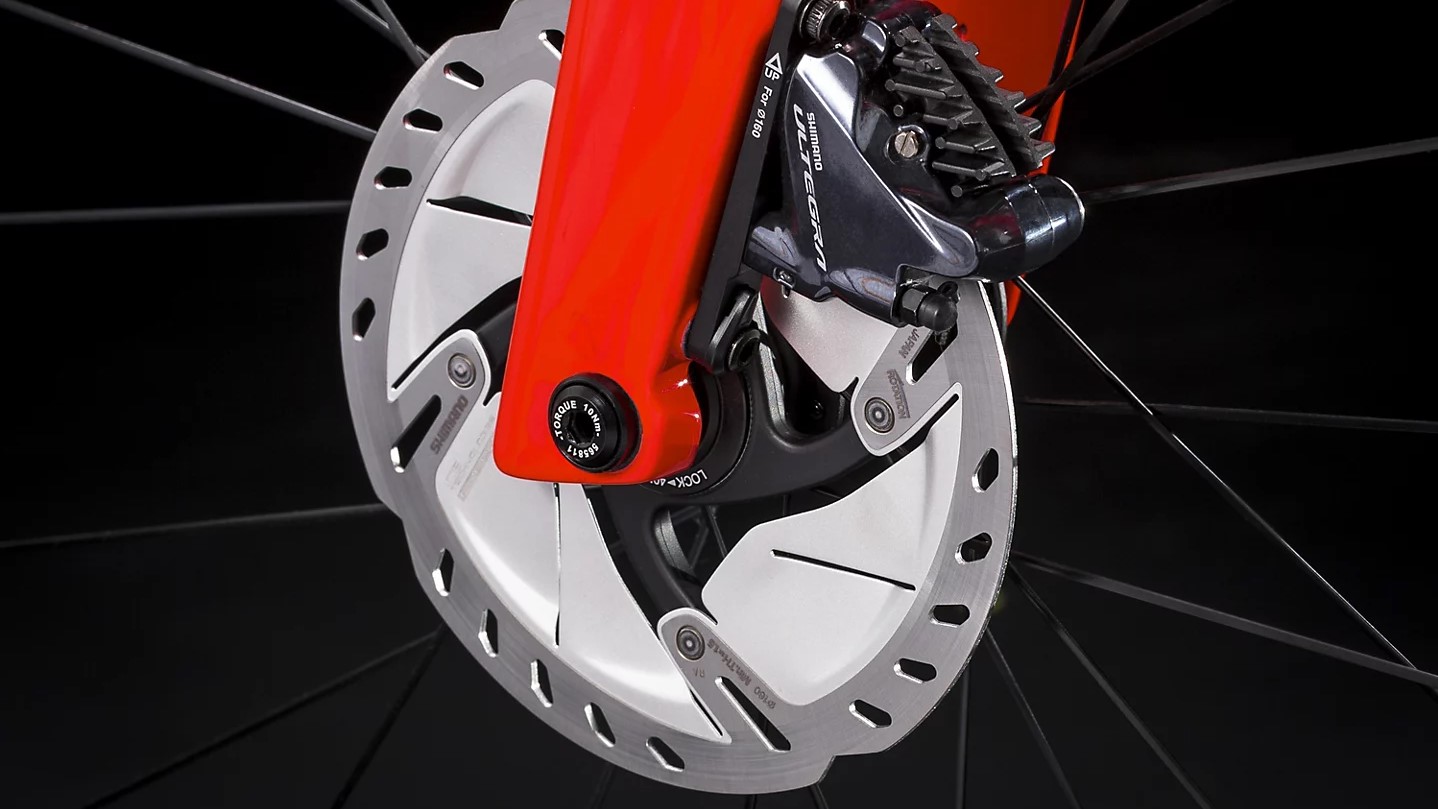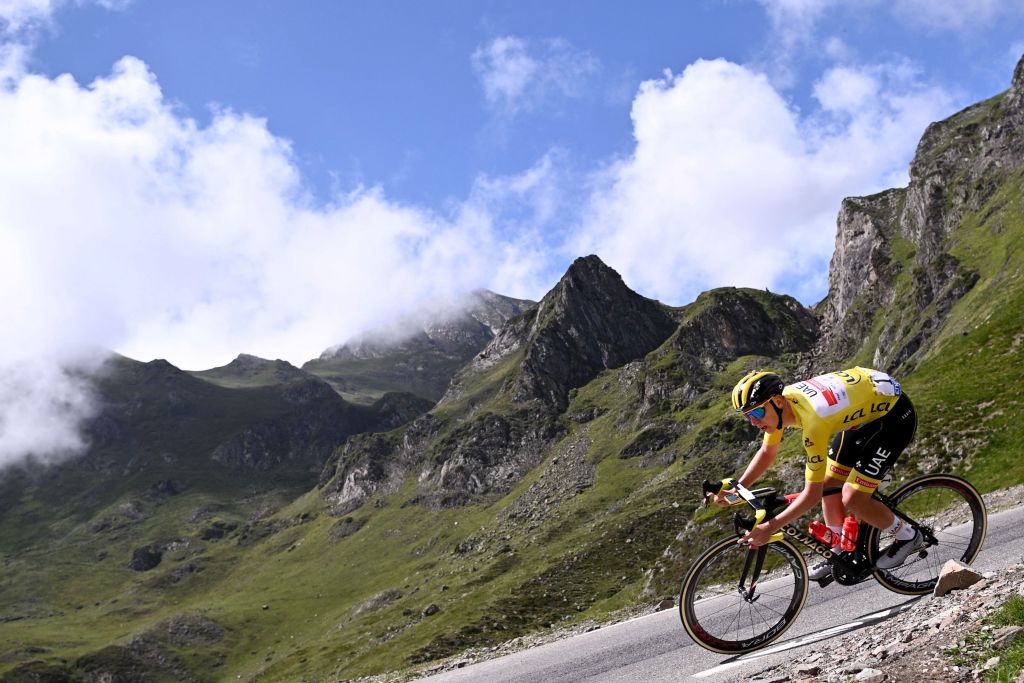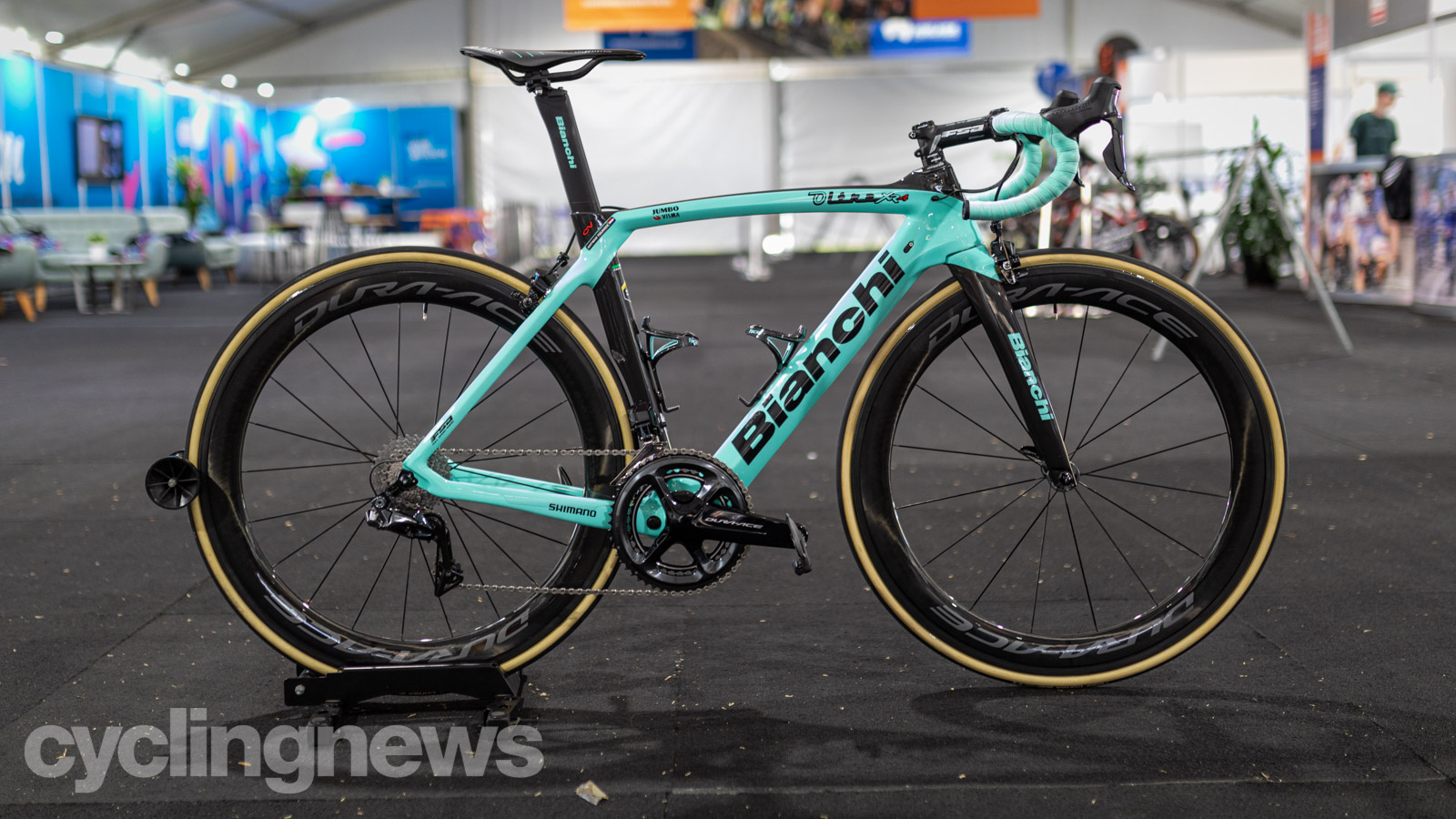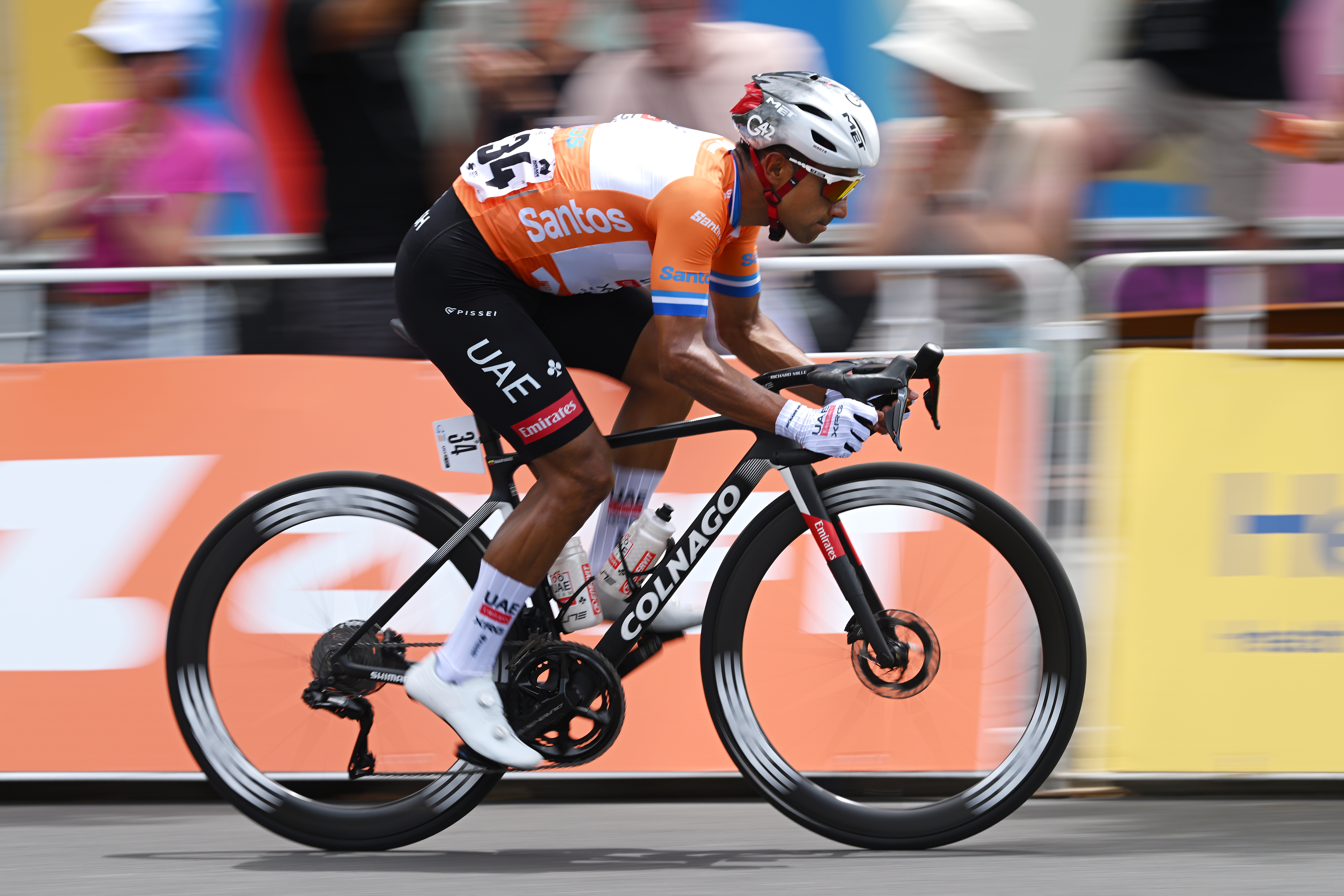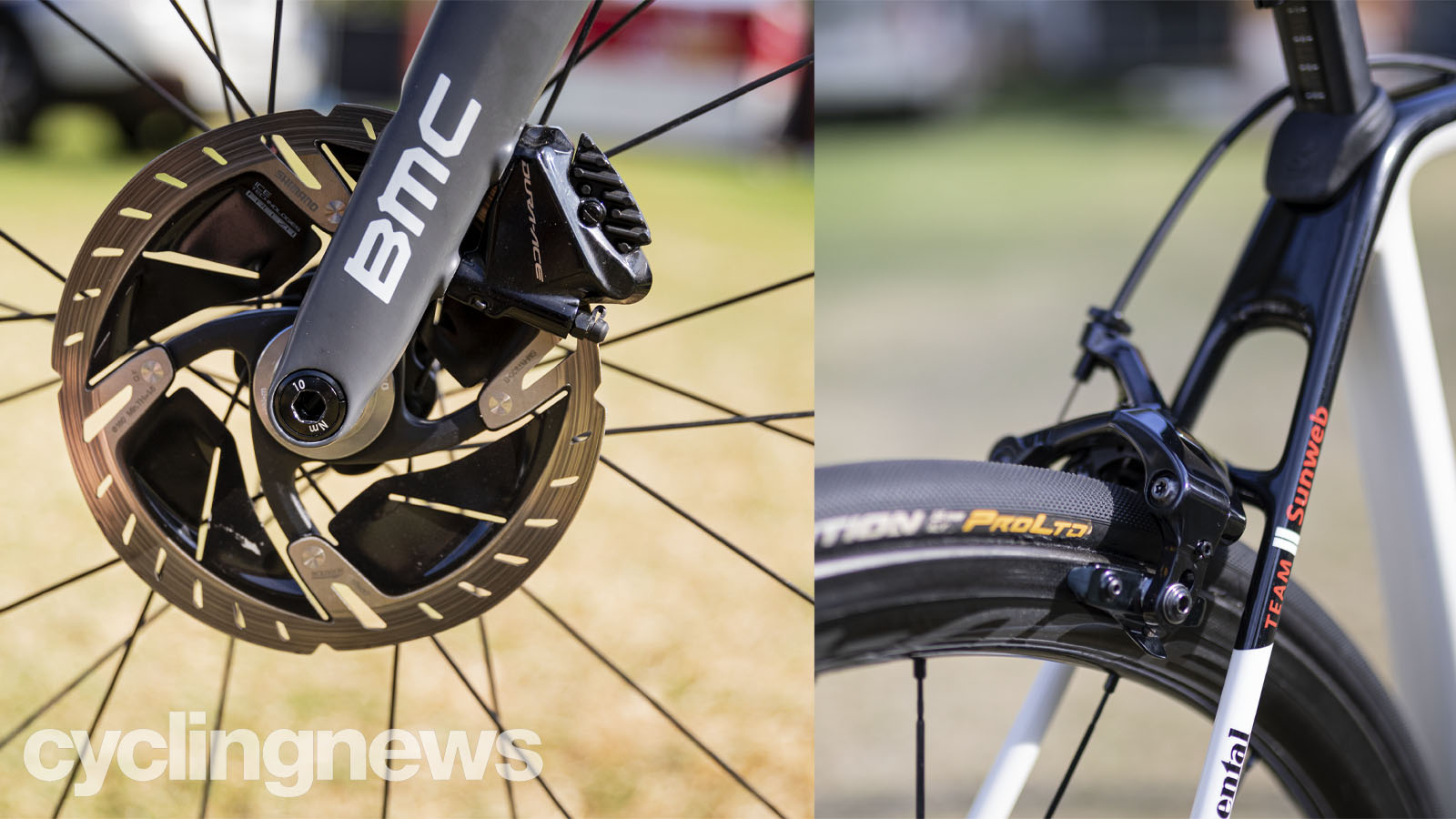
Ineos Grenadiers recently became the final WorldTour team to adopt disc brake technology on their bikes. This marks the end of an era for rim brakes, which had dominated the cycling industry for decades, and comes despite the fact that when disc brakes were first released on road bikes not too long ago, they were met with more than a few scoffs, doubts, and mumbles of disapproval.
But over the past few years, disc brakes have become increasingly popular both in the WorldTour peloton and the cycling industry as a whole. Hybrids, mountain bikes, cyclocross bikes, time trial bikes, and road bikes are now outfitted with disc brakes; yet there is still a significant number of cyclists who prefer rim brakes.
In this column, we’ll look at the similarities and differences between disc brakes and rim brakes, and explain why you might want to choose one over the other.
- Road bike disc brakes: A guide to choosing the best disc brakes for your road bike
- Best disc brakes for gravel bikes: Stoppers for gravel grinding
Disc brakes and rim brakes explained
The names 'disc' and 'rim' brakes come from where they apply braking force: disc brakes are what we see on many cars, motorcycles, and lorries, and they apply braking force to a rotor (disc) that is mounted on the hub of the wheel. A rim brake, meanwhile, applies braking force directly to the rim of the wheel itself.
There are also two different kinds of brakes: mechanical (or cable-actuated) and hydraulic. In disc brakes, both types are widely available but the popularity lies in favour of hydraulic, while in rim brakes, cables reign supreme and hydraulic rim brakes are rare - especially in road cycling.
Mechanical brakes transfer the braking force to the brake calliper via a braided steel cable, while hydraulic disc brakes use a sealed fluid system to transfer braking power to the calipers.
Geared toward the casual rider and at-home mechanic, the biggest upside of mechanical disc brakes is that they are compatible with normal rim brake shifters. Mechanical disc brakes are also cheaper than comparable hydraulic disc brakes, both in terms of the brakes themselves and the bikes designed for them. However, they can require more maintenance as they require frequent adjustment as pads wear down. They can also suffer from cable contamination and wear, just like any other cable on your bike.
The latest race content, interviews, features, reviews and expert buying guides, direct to your inbox!
Hydraulic disc brakes, on the other hand, offer the best and most efficient braking performance due to the lack of friction thanks to not having a cable. However, you’ll need to build extra room into your budget for hydraulic-specific shifters, and the fluid-driven system can be difficult to set up, unless you’re an experienced bike mechanic and have a bleed kit to hand.
Rim brakes are often mounted near the top of the fork for the front brake, and at the top of the seatstays for the rear brake. Depending on the age and price bracket of your bike, there are actually three commonly used rim brake types: V-brake, Cantilever, and Caliper. In the case of road bikes, you're most likely to encounter the latter.
All rim brake types are quite finicky to set up, but with wider clearances between pad and rim, there's more margin for error than disc brakes, and once they're in place they shouldn't require much maintenance besides replacing worn-out brake pads and replacing cables when needed.
Why brakes are so important
Perhaps we’re stating the obvious here, but brakes are important because they bring you to a stop. Whether they are disc brakes or rim brakes, their purpose is to slow down your wheels until they stop spinning altogether.
Brakes are important in so many different scenarios, including race situations, traffic, descents, stop lights, or an unexpected run-in with wildlife (or distracted pedestrians).
However modern-day brakes are a lot more nuanced than that, and each type of brake – disc or rim – has advantages and disadvantages.
Bike compatibility
When shopping for a bike (or a bike frame), you will often find two different options: the disc brake version and the rim brake version. The design of disc brakes is not compatible with a rim brake bike, and vice versa. This means that you won’t be able to experiment with the two different kinds of brakes without getting a completely different bike.
Why disc brakes are better
Disc brakes have a level of modulation to them, which allows you to feather the brakes, and apply them lightly, hard, or somewhere in between. It’s just like using the brakes in your car – you can apply them gradually as you’re approaching a traffic signal, or you can apply them full-stop if something jumps onto the road in front of you.
They also generate significantly more stopping power than rim brakes, which comes in handy on steep descents and in races. Not only are disc brakes powerful, but they also require much less force to be applied at the lever, which is a great feature for kids, beginner-level and older riders.
Disc brakes also function well in all sorts of weather conditions such as rain, sleet, and mud. Variable weather conditions can hinder the performance of rim brakes, which puts you in a position where you don’t know how or when to apply your braking power in order to stop. This is one of the biggest reasons that cyclists choose disc brakes over rim brakes, especially during winter.
Off-road riders – from mountain bikers and cyclo-cross racers to gravel enthusiasts and bikepackers – love disc brakes because they allow for wider rims and more tyre clearance. Without the need for a brake caliper, there is more room for the wheel, and some disc brake road bikes can now accommodate up to 38mm wide tyres.
One final note: disc brake rotors can also be changed and customised for more or less stopping power. In general, a larger rotor equates to more stopping power, which is why we see the largest disc brake rotors on downhill mountain bikes and the smallest on hybrid bikes.
Why rim brakes are better
The biggest advantage that rim brakes have over disc brakes is that they are lighter. With the parts, pads, components, and rotor altogether, a disc brake is typically a few hundred grams heavier than a comparable rim brake. Of course, there are super-lightweight disc brake setups out there, but they will cost you a pretty penny.
The pads of a disc brake are much smaller and more tightly adjusted than rim brakes, which is great for keeping water and grit out, but is also much more difficult to service. If the disc brake rotor gets bent or is slightly misaligned, many riders experience disc brake rub or squealing coming from their brakes. Needless to say, rim brakes don’t have this problem.
How to choose
In terms of braking performance, disc brakes outperform rim brakes in almost every category. From variable weather conditions and steep descents, to quick stops in traffic and high-speed races, disc brakes are superior to rim brakes.
However, disc brakes can be finicky, expensive, and difficult to change and maintain. We’ve seen it many times in pro races, when a rider needs a wheel change and the mechanic struggles horribly to remove and exchange a wheel with disc brakes. Manufacturers are working to fix this problem, but it still persists. If you’re a dedicated racer, you will get a much quicker wheel change with rim brakes versus disc brakes.
Rim brakes are cheaper, easier to maintain at home, and often lighter than disc brakes, but they are notorious for poor performance in wet conditions, especially with carbon rims. This is because water builds up on the surface of the rim, and when the brake pads come in to make contact, they first have to displace the water before they can even get to the rim. This split-second delay between the application of the brake lever and the actual slowing of the rim is not something that's experienced with discs, but of course, with a bit of practice and experience, you can learn to safely use rim brakes in the wet.
However, it's worth noting that when you use your rim as a braking surface, it will wear down over time and you'll need to replace your wheels sooner than you would if you were using disc brakes.
The safety of disc brakes has been called into question since their advent, but most of the 'evidence' is anecdotal and circumstantial. Disc brakes heat up on long descents, and some riders have claimed to have been sliced open by a hot disc brake during a crash. But bike design and safety testing is better than ever, and disc brakes are not sharp. Their overall safety is improving at a rapid rate, and disc-brake-induced injuries are an extreme rarity.
Conclusion
Disc brakes are superior to rim brakes in more ways than one, but for some riders, the pros won’t outweigh the cons. Despite all the performance benefits, disc brakes can be harder to set up and service, and they are heavier than rim brakes. In addition, bikes outfitted with disc brakes are generally more expensive than those outfitted with rim brakes, and there’s a complete lack of compatibility between the two. That means you’ll have to make the complete jump from rim to disc brakes – you can’t just dip your toe in the water.
Rim brakes still work great. Despite their pitfalls, the design and function of modern-day rim brakes is better than ever, and they’re not necessarily any slower than disc brakes. Just look at what Ineos Grenadiers have won in the past two years: one Tour de France, two Giros d’Italia, and the Olympic Road Race, all on rim brakes.
But for most cyclists – from commuters and families, to elite racers and off-road adventure riders – disc brakes are the better option because they are more powerful, with more modulation, and they perform consistently well in all weather conditions.
Zach is a freelance writer, the head of ZNehr Coaching, and an elite-level rider in road, track, and e-racing. He writes about everything cycling-related, from buyer's guides to product reviews and feature articles to power analyses. After earning a Bachelor’s Degree in Exercise Science at Marian University-Indianapolis, Zach discovered a passion for writing that soon turned into a full-fledged career. In between articles, Zach spends his time working with endurance athletes of all abilities and ages at ZNehr Coaching. After entering the sport at age 17, Zach went on to have a wonderful road racing career that included winning the 2017 Collegiate National Time Trial Championships and a 9th place finish at the 2019 US Pro National Time Trial Championships. Nowadays, Zach spends most of his ride time indoors with NeXT eSport.
